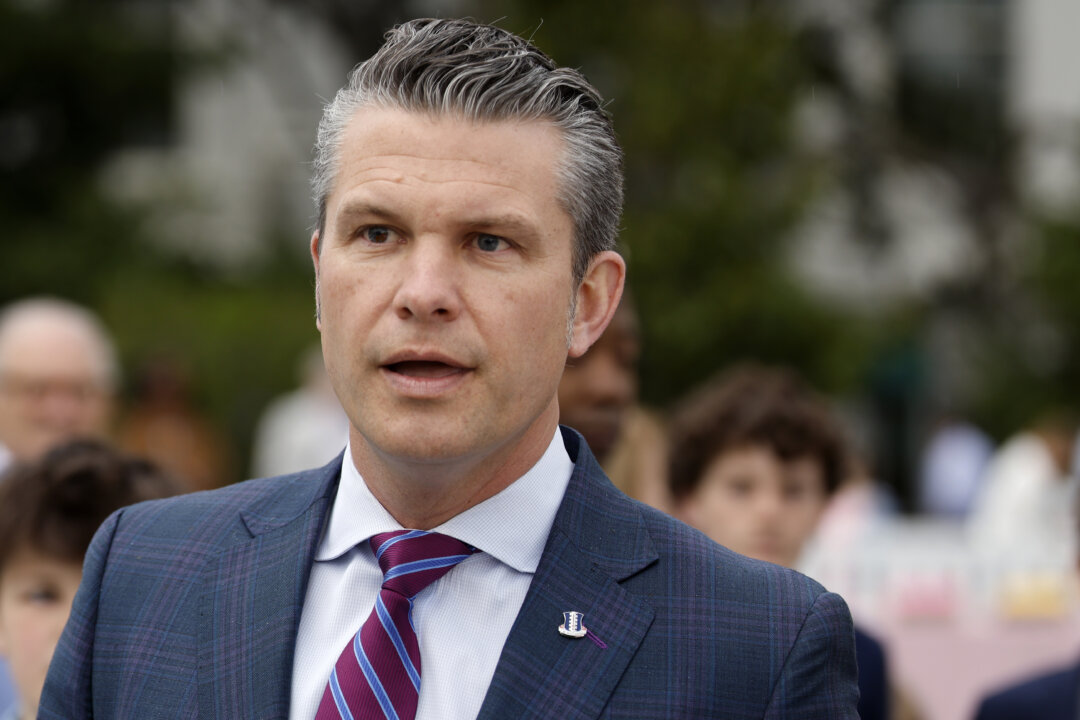Defense officials say the Chinese communist regime is ramping up its aggression in the region.
U.S. Secretary of Defense Pete Hegseth set off to Singapore on May 28 for a series of meetings that he said would “ensure that [the] region understands America will be strong.”
“We seek no conflict with anybody, including the communist Chinese, but we will deter that,” he said at the Joint Base Andrews in Maryland before departure.
“We will stand strong for our interests. And that’s a big part of what this trip is all about.”
The defense secretary will attend the annual Shangri-La Dialogue in Singapore on May 31, where he will meet with Prime Minister Lawrence Wong and other officials, as well as several defense ministers from Southeast Asian nations, according to a May 27 announcement by the Department of Defense.
Hegseth, in an appearance on Fox News on May 19, said that the Trump administration is shifting its focus to the Indo–Pacific to deter a potential conflict with the Chinese regime. He chose the region for his first trip as defense secretary, reiterating the U.S. military’s commitment to deterrence during stops in Hawaii, Guam, the Philippines, and Japan.
Allies
In recent months, U.S. defense experts and officials have called for stronger U.S. partnerships in the Indo–Pacific to counter the Chinese regime’s growing influence.
During a congressional hearing in April, John Noh, assistant secretary of defense for Indo-Pacific security affairs, said that “stronger allies lead to stronger alliances, and stronger alliances deter aggression and create dilemmas for our adversaries.”
Navy Adm. Samuel Paparo, commander of U.S. Indo-Pacific Command, said at the hearing that the Chinese military had achieved “unprecedented” modernization with respect to weapons and capabilities, posing “a real and serious threat to our homeland, to our allies and to our partners.”
At a separate congressional hearing on May 15, retired Gen. Charles Flynn, who served as the commanding general of U.S. Army Pacific, echoed Paparo and said the Chinese military of today is “dramatically different” from when he served.
“Are they rehearsing? Are they preparing? Absolutely,” Flynn said, adding that the United States should take advantage of regional partnerships to counter this growing threat.
“This is not just a U.S. problem. This has to be a Taiwan problem, a Japanese problem, a Philippine problem,“ he said. ”It’s got to be the entire first island chain, to include South Korea.”
Former Deputy Secretary of State Kurt Campbell said at the May hearing that the United States, the United Kingdom, and Australia (AUKUS) partnership affords an undersea advantage that is “still 10, 15, 20 years ahead of Beijing,” emphasizing the importance of cementing regional ties.
Advancements
Gen. Chance Saltzman, chief of space operations for the U.S. Space Force, said that the Chinese military has made strides in space capabilities over the Indo–Pacific, enough to become a “powerful, destabilizing force.”
Saltzman told a congressional panel in April that the Chinese regime has “invested heavily” in weapons to destroy U.S. satellites and could deploy these systems by mid-to-late 2020.
China is also practicing “dogfighting in space,” Saltzman said, saying his service has seen Chinese experimental satellites conducting “unusual, large, and rapid maneuvers” in geostationary orbit in recent years. Based on the observation, Saltzman said Beijing “is resolved to contest [U.S.] spacepower through combat operations.”
The Chinese military has also drilled with its most advanced long-range H-6 bombers in the region. Satellite images showed H-6 bombers flying over the disputed Scarborough Shoal ahead of Hegseth’s visit to the Philippines in March, and showed two H-6 bombers landing on the disputed Paracel Islands on May 19.
Frank Fang and Reuters contributed to this report.

